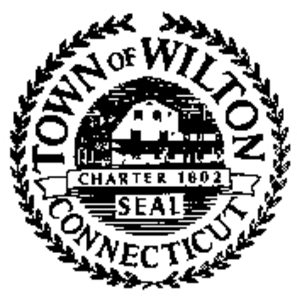
First Selectwoman Answers Questions About Guiderails
Does the Town have a guiderail replacement program? If yes, why and what is it?
Yes, the Town has a program to replace the wood post/wire rail guiderails because that type of guiderail no longer meets crashworthiness standards. A number of years ago the State issued guidelines to municipalities indicating when replacing guiderails, they should not be replaced with wood post/wire rail guiderails. A program to perform annual removal/replacement of wood post/wire rail with metal beam guiderails (MBR), which pre-dates my being first selectwoman, was implemented by the town.
Why did the Town choose MBR as the replacement guiderail?
We have yet to find records, which likely go back more than 15 years, as to the specifics of when and why someone decided the Town should exclusively use MBR as a replacement guiderail. Early on in my term, I received a complaint about the appearance of a newly installed MBR guiderail. I drove to the location and agreed that the material was not appropriate for the location and spoke with the then long-time Town Engineer. I was told that the MBR guiderail was the state standard and therefore there wasn’t another option.
What changed?
Wilton’s long-time town engineer retired and nine months ago a new town engineer was hired . When the wood post/wire guiderails were removed on Wild Duck and Woods End and replaced by MBR, residents contacted DPW/Facilities Director Chris Burney, new Town Engineer Frank Smergilio and me. This time when I spoke with Frank, he indicated that he didn’t necessarily agree that MBR was the only option for replacement. He explained that there are two separate issues to be considered: the requirements for whether or not a guiderail placement is needed and if needed, the requirements for the appropriate material for that specific placement.
What happened next? Why were the guiderails removed?
We decided to engage a traffic-engineering firm to do the following:
1-Review our long-time guiderail placement standard and make a recommendation as to guiderail placement standards,
2-Provide us with guiderail material standards and,
3-Specifically look at Wild Duck and Woods End and determine what guiderail placements were necessary on the two roads.
The results are as follows and can be read about in detail in the engineering firm’s report found here.
1-The Town’s guiderail placement standards were incomplete. (The DPW department has now adopted the state’s placement standards. This will be discussed at Monday night’s BOS meeting.)
3-The review of Wild Duck and Woods End determined that nowhere on either road met the current state standards for placement of a guiderail, of any kind. (This is the reason that the MBR guiderails are being removed.)
How much taxpayer money was spent to install and then remove the guiderails on Wild Duck and Woods End?
The MBR guiderails installed on and then removed from the two roads were returned to stock and will be use in a more appropriate location in the future. As an FYI, there is a resale market for used guiderails. The town has purchased and installed used guiderails, so that it would have been another other option had we not felt we could reuse them somewhere else. We don’t yet have the employee labor costs for the removal, as the work hasn’t been completed. The labor to install included the labor for the necessary removal of the wood post/wire guiderails, so the cost specific to only the installation must be calculated. When that information is compiled, it will be made public. Right now we don’t expect it to exceed four man-days in total for the installation and removal.
How will what we have learned change the guiderail replacement program in terms of both practice and cost?
As far as practice for the ongoing program, before removing any existing guiderail, wood post/wire rail or other, we will apply the state standards to determine if a guiderail replacement is required. If not required, the existing guiderail will be removed and no replacement will be installed. As far as cost, until we have an accurate inventory of guiderails, we do not know the longterm cost of the replacement program. It may be that there are other locations where wood post/wire rail guiderails exist and do not need replacement and others where they are needed.
Do we currently have a database of guardrails, so we know how many wood post/wire rail need to be possibly replaced and how long before that program is completed?
We don’t currently have a database, but Streetscan obtained data on our guiderails at the same time they scanned our roads. We will be contracting with them to provide us with a database, similar to what they created for our roads. Our approach to guiderails will be similar to what our approach has been to paving.
Why am I using the term “guiderails”, when they are “guardrails”?
That is the new terminology.
More Questions? Please email me at lynne.vanderslice@wiltonct.org